Weeping cherry trees are the first to put a burst of pink or white flowers on their drooping branches, giving a fresh breath of air to the landscape at the end of winter. But what if you notice your tree suddenly looks sick and didn't produce the beauty you expected to welcome your spring? We have done the research to answer why these deciduous trees are dying and what we can do about it.
These trees usually start to wither because of improper watering and unstable environmental condition, such as harsh weather and poor soil nutrient. It will then be susceptible to pest and disease infestations, making the case worse. Conduct a diagnosis first and apply the corresponding action to treat your tree.
How can you tell it's not too late to save your plant? Read on to properly analyze cherry tree problems and apply the best solution to fix the issue.
![A photo of beautiful cherry trees with cherries in orchard. - Why Is My Weeping Cherry Tree Dying? [And What To Do]](https://gardentabs.com/wp-content/uploads/2023/04/A-photo-of-beautiful-cherry-trees-with-cherries-in-orchard.-Why-Is-My-Weeping-Cherry-Tree-Dying-And-What-To-Do.png)
How Do You Know When A Cherry Tree Is Dying?
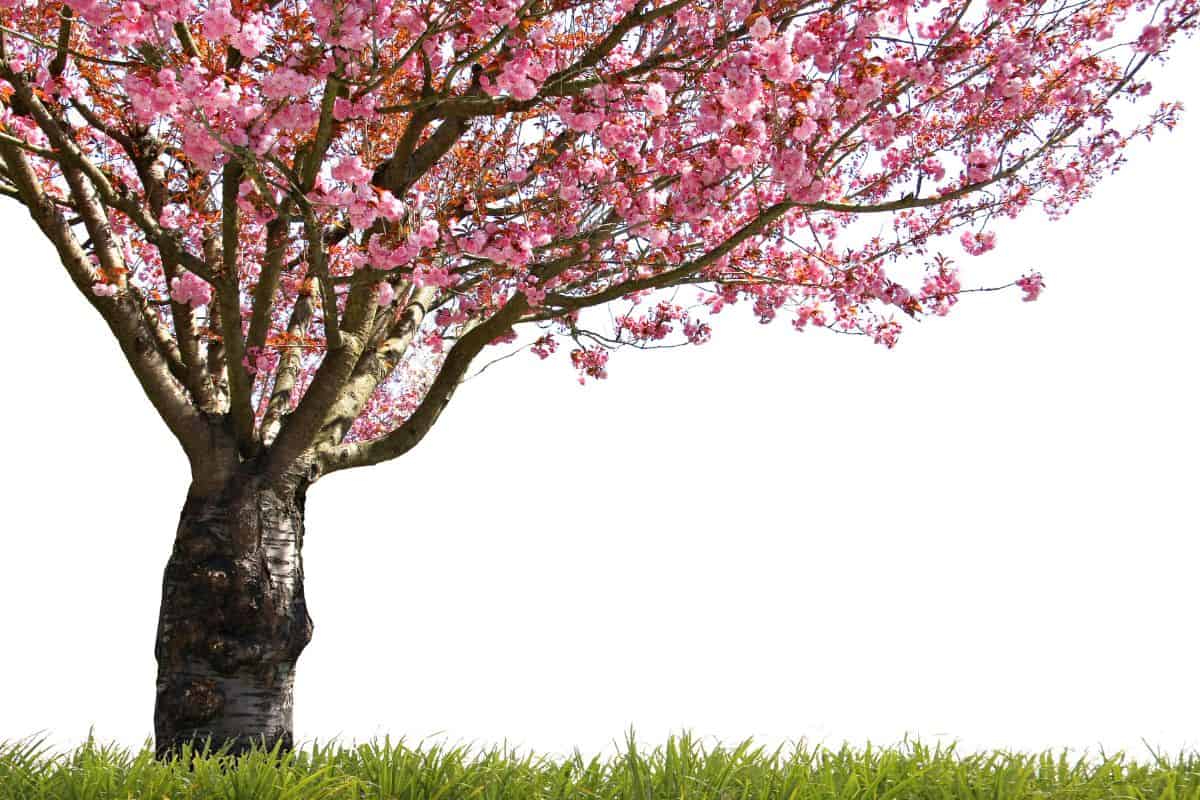
Weeping cherry trees may look challenging to take care of, but they are one the trees that can be easy to grow. They are hardy in USDA Zones 5 to 8 and grow profusely in another region if well-cared.
But if your tree shows no leaves, buds, or flowers, especially in early spring, it might have drying tree symptoms. While the tree has a life expectancy of around 12 to 60 years, you can do a closer inspection to check if your tree has the following indications.
See if there are brittle branches and the tree wood is decaying. It may be rotting from the inside out.
Also, check for big pieces of crack or fall-off bark. Bark acts as the protective layer of the tree, and peeling bark may indicate that the disease has affected the plant gravely.
There should be rounded flower buds in early spring. If the flowers appear flat and shriveled, the tree may have experienced winter stress and is dying.
Do a scratch test by carefully making a small cut into the bark of the tree's trunk with a knife. The tree is no longer living when the cambium layer is already brownish. Do this in several areas to confirm the severity of the condition.
Examine the tree's crown by pulling the soil away from its base. See if there are signs of fungus or rot in the outer bark and roots. Scratch some parts near the base to check the health of the cambium. If the tree has already died, it should be removed to prevent the fungus from spreading to nearby plants.
What Causes A Weeping Cherry Tree To Die?
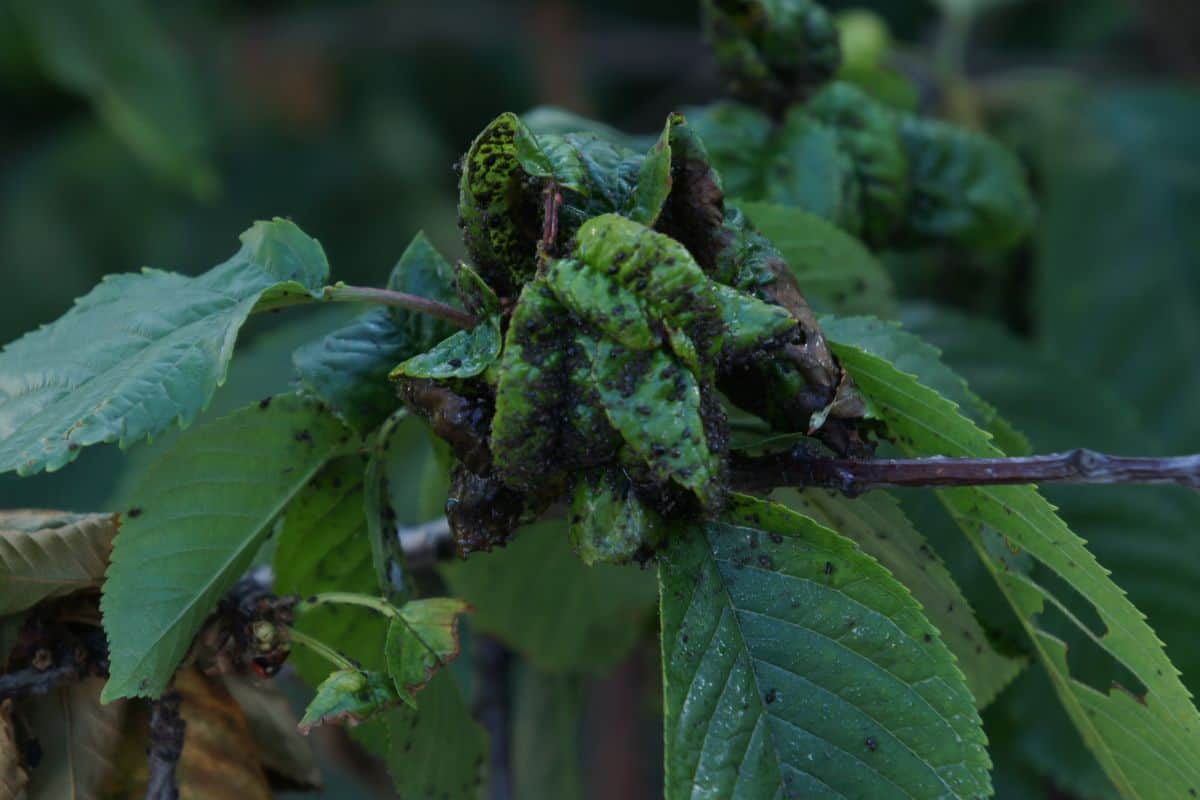
If the plant has been a part of your landscape for less than two years, most plant issues are not brought on by a disease or an insect. What leads the tree to die?
Significant contributors to plant decline include insufficient growing environments, improper care, harsh weather, and soggy soil. Pests and fungus will sometimes take advantage of sick or injured plants, or the damage may have happened long before you detected it.
Suppose the preliminary inspection shows that your ornamental tree can still be saved and is treatable. In that case, you can deduce what causes this problem. Below are the three common causes and their immediate solution.
Improper Watering
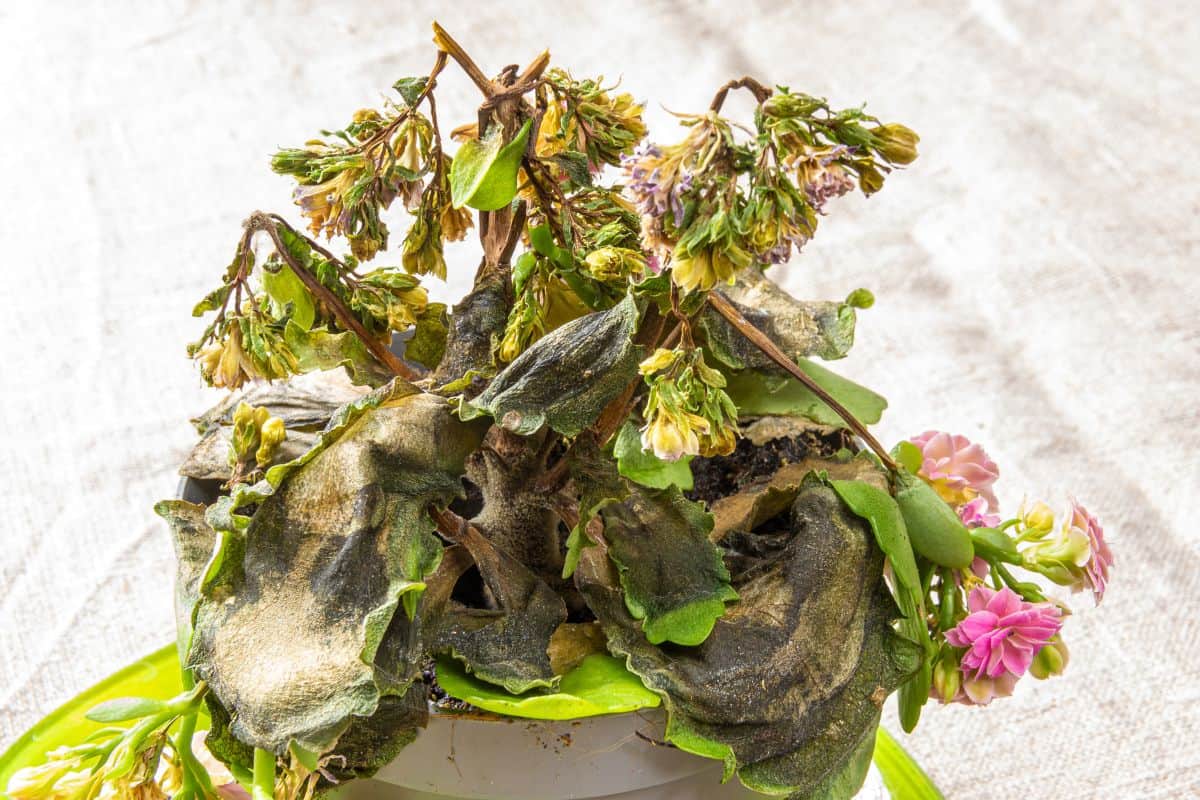
Watering your plant is a very important practice. A bone dry soil can cause difficulty transporting nutrients throughout the plant's system. In contrast, soggy soil may welcome unwanted hosts to the roots, such as bacteria and fungus. However, prevention is possible by determining whether your tree is over- or under-watered.
To measure the amount of water, check the top two to four inches of soil. If the soil is dry, it needs frequent watering. But, after more than two hours of watering, it is overwatered if the water is still saturated with water.
The best application is to water the weeping cherry tree during its first year of planting twice or thrice a week. Check regularly three inches from the topsoil and wait for the ground to dry before you can water it again.
Waterlogged soil can lead to root rot, resulting in yellowing and falling leaves. The tree's health will dramatically decline after a few weeks or months until it will be no longer treatable. If you have too much clay soil, amend it by adding compost, perlite, or sand to allow good drainage.
On the other hand, an underwatered tree will likely begin its leaves to curl or produce little to no flowers during the blooming season to survive. You can apply two inches of compost or four inches of mulch around the tree's drip line to help hold more water and protect it from evaporating. Make sure to apply these materials three inches from the trunk to prevent mold or other diseases from forming.


Improve your soil with this Miracle-Gro Perlite on Amazon.
Environmental condition
According to the survey, extreme weather patterns have forced many trees to set foot in dormancy in a stressed state. The long spring rains and the extended dry summer weather from last year affected the tree's root capacity to absorb water, eventually declining the tree's health. Moreover, weakened trees can make pre-existing disease and pest infestation damage worse.
Sunscald or southwest injury can also affect deciduous trees causing discoloration or cracks in the trunk. It happens when the sun during winter is hot enough to burn the dormant cells in the daytime, and there's a sudden drop in temperature at night.
It then produces damage around the tree's body that attracts pests and diseases, which could be fatal if not treated early. To prevent this injury, cover your tree with white tree wraps to keep them shaded until the bark is thick and sturdy enough to withstand harsh temperatures.


Try this Dewitt 3-Inch by 50-Foot Tree Wrap on Amazon.
Pests and disease
As discussed above, an ornamental tree is under harsh environmental conditions or watered improperly invites prevalent threats of bacteria, fungus, and pests. The beauty of your weeping cherry tree is vulnerable to several other common diseases, including black knots, cankers, bacterial fire blight, and wood rot.
It becomes an easy target for aphids, scales, spider mites, and borers in drought-like settings. Gardeners should look for tent caterpillars, another nuisance of weeping cherry trees.
These can all cause severe damage and worsen your tree's health and should be realized as early as possible before it's too late to save your tree. Depending on what the problem is, there is specific management for that.
How Do You Save A Dying Weeping Cherry Tree?
You can still do the last resort to save your tree from dying. Give your tree the best growing conditions it needs that are well-drained soil, eight hours of daily sunlight, and pruning.
Test the soil if it's lacking drainage by digging a 12 by 12 inches hole and filling it with water overnight. If it takes longer to drain, you should apply soil amendments, aerate the roots, and then replant it in the correct type of soil at four feet depth. The ideal soil for your ornamental tree is loam soil with less than ten percent clay mixture.
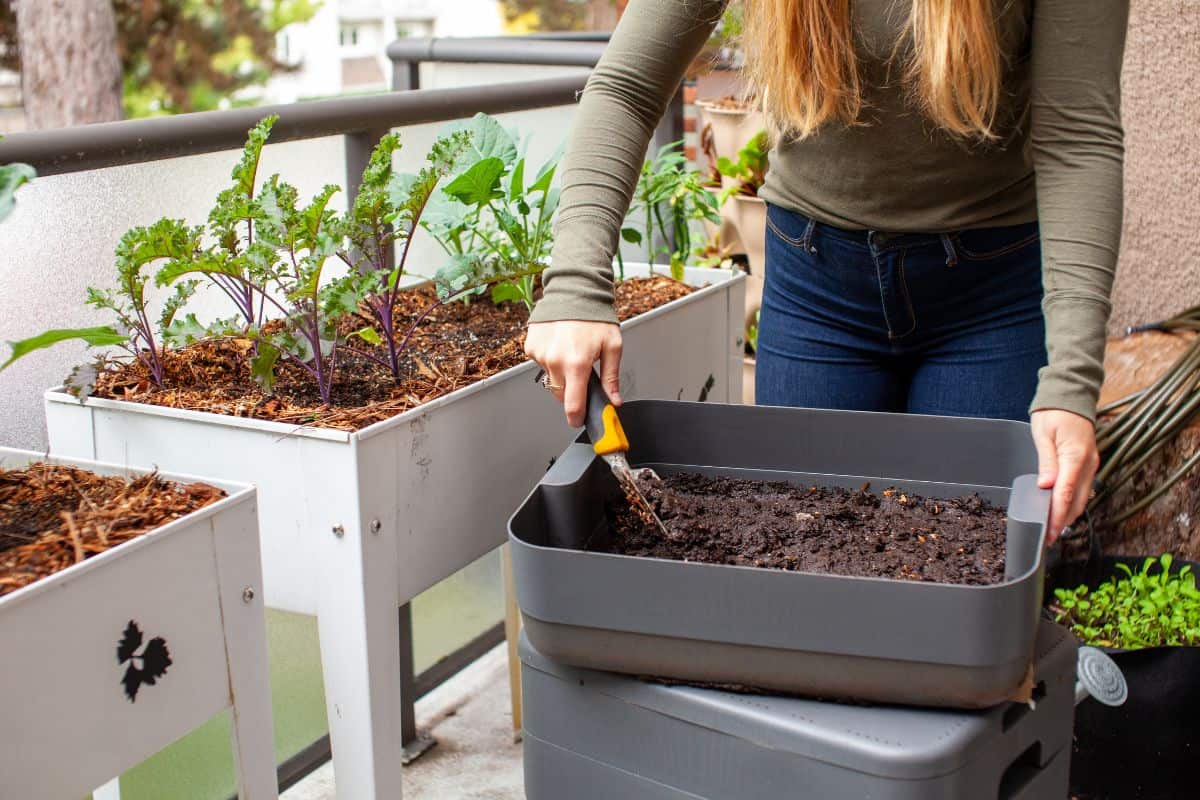
Additionally, it requires eight hours of sunlight each day to assist the soil in drying and maintaining the plant's food production to prepare for the upcoming blooming season.
Diseases are more likely to cause early tree death. You can avoid it by routine trimming to maintain adequate airflow and humidity levels. If the affliction is worst, using organic treatments, fungicides and pesticides are helpful. Carefully read the instructions and label for proper application.
How Often Should You Water A Weeping Cherry Tree?
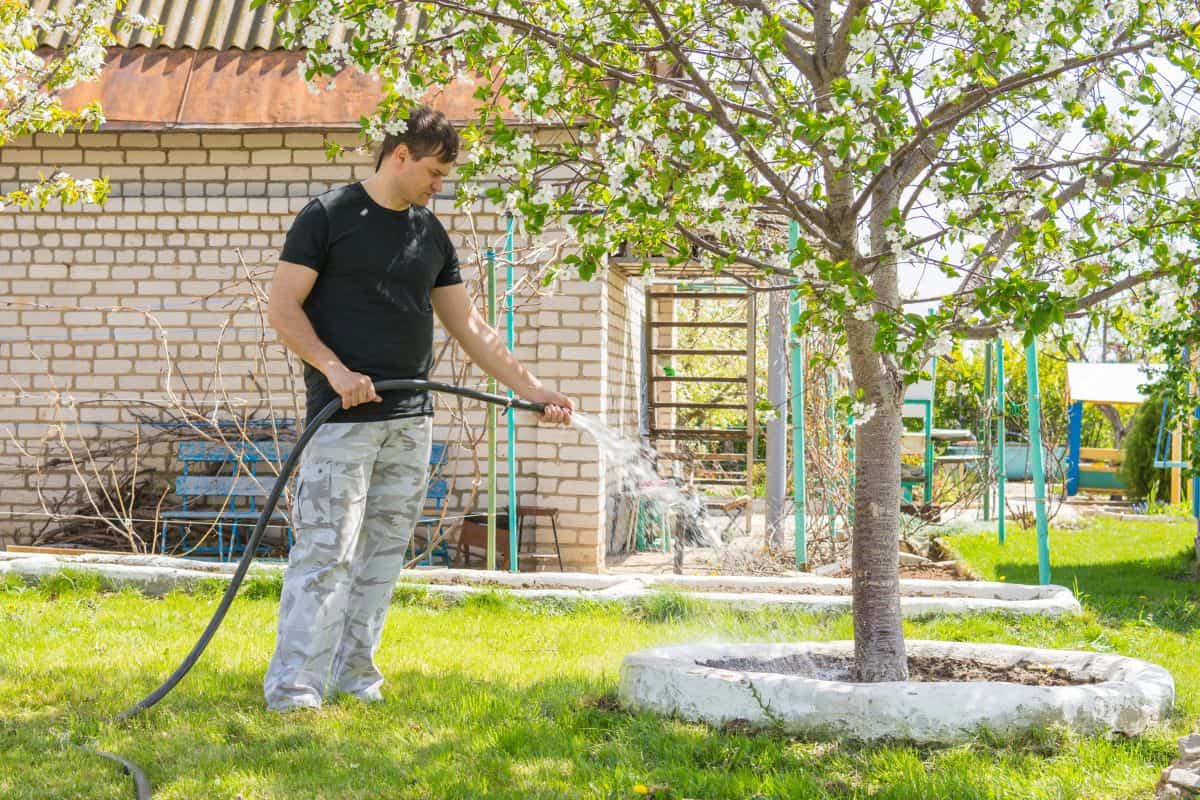
Weeping cherry trees need to be adequately watered during their first year after planting. Eighty gallons of water per must be supplied weekly to ensure they thrive. During warm weather, experts advise watering twice a week. To avoid root rot emergence in the roots, the soil must be allowed to dry out in between waterings completely.
Final Thoughts
![Glorious spring. - Why Is My Weeping Cherry Tree Dying? [And What To Do]](https://gardentabs.com/wp-content/uploads/2022/08/Glorious-spring.-Why-Is-My-Weeping-Cherry-Tree-Dying-And-What-To-Do.png)
Your cherry tree probably has a problem if it starts to die or lose leaves at other periods throughout the year. Knowing what's causing the issue and treating it the right way are the most significant ways to identify and fix the problem. Use low-toxic products of pesticides carefully and only as a last resort.
But being proactive is better than waiting for your tree to be treated. Plant your weeping cherry tree in well-drained soil in a sunny area with adequate watering to ensure it thrives for years. Routinely monitoring for early symptoms of pests and diseases is also a good practice.
If all else fails, remember to get in touch with the supplier or your neighborhood nursery and seek advice if they can.
You might also like reading these.
19 Gorgeous Large Flowering Trees
